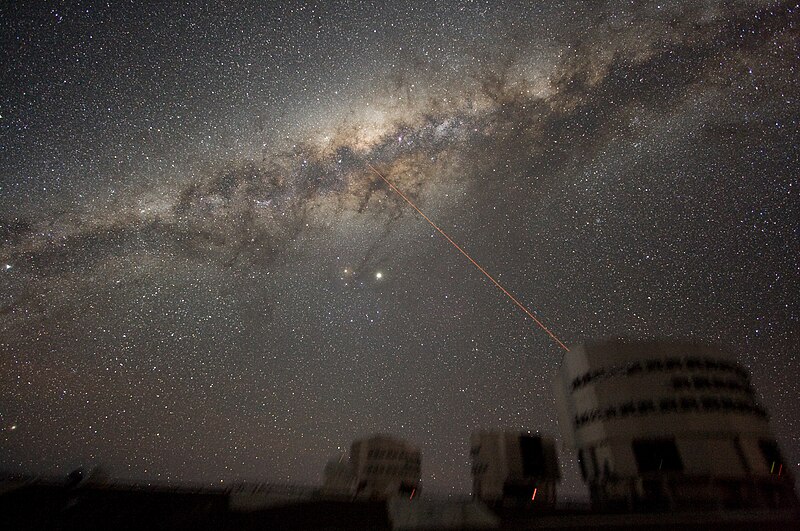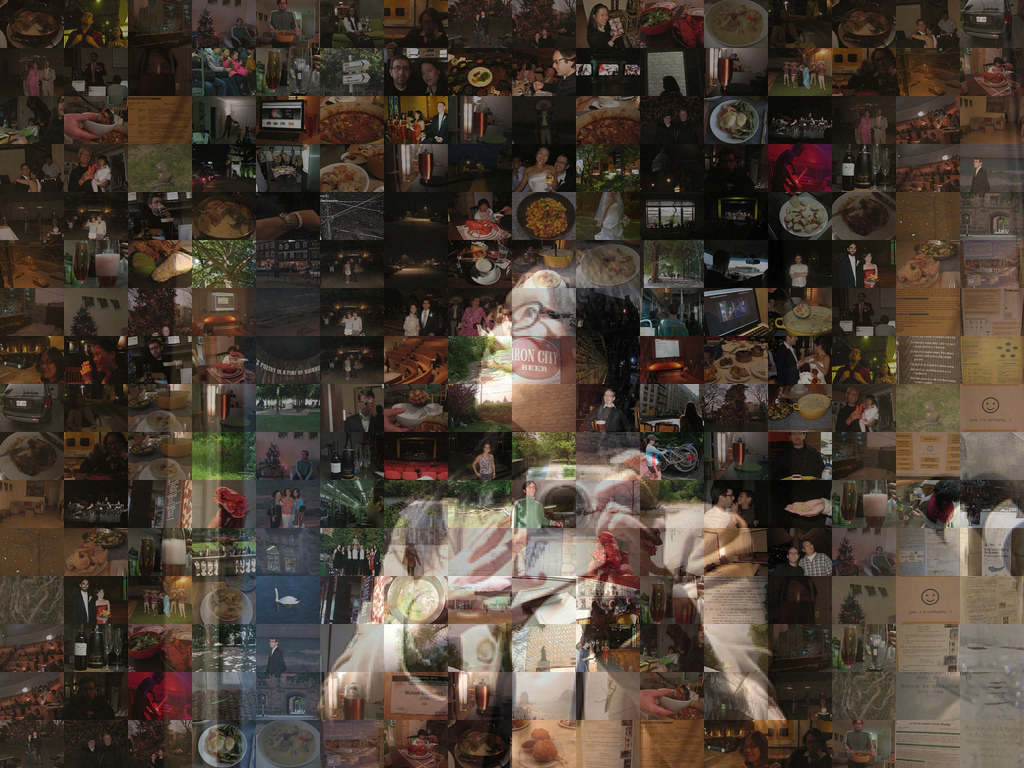
Understanding as a constantly evolving and expanding aggregation. An embrace of the future demands we allow for those individual squares to shift radically.
I am still on a bit of a future focus and am still, tangentially, building on the ideas from this post and this post. I found myself looking towards history for examples on how societies meet change, the type of change we typically associate with the future (even though it is perpetually the present). How introducing an idea into an existing social (generally cohesive) order forces either a rejection of that idea (because it isn’t valid or is too valid) or a quasi-embrace with its truth. This embrace forces a realignment of the flows and contours of society to allow for the idea’s manipulation. To be useful, an idea must be engineered around. Once it is embedded in the fabric, it becomes useful and is manipulated for purpose (thus creating another cycle of change). But that is all a bit flighty. What we are looking at today are merely responses to accepted structure, to the accepted, existing flow of things in society.
Life Expectancy
We can start with an example that we can all relate to, one that is generally misrepresented. Life expectancy. We are born into a world where we can reasonably expect to live to 75, give or take a few standard deviations. This number will presumably inch higher as conditions improve and will more than likely decrease if and when we face a cyclical catastrophe (war, etc.). Regardless, the belief that we will live to 75 frames our worldview, our expectations of life, our cycles of activity, industry, decline. We are bound by time in every way imaginable.
At the turn of the twentieth century, life expectancy was much lower. This wasn’t due necessarily to more people dropping dead at age 55 instead of 75, but rather due to infant mortality (among other things). So, this analogy is already built on the misunderstanding of life expectancy (as this blog points out), but a misunderstanding is an understanding (in that it is widely, if erroneously, accepted). Either way, people reasonably expected to live to a certain age and built social order around it. Our coming of age experiences, our celebratory and ceremonial markers (marriage, adulthood, etc.) are all built around where that event sits on a continuum. If you live to be 250 years old, a hundred years is still lacking maturity. So, we live according to these precepts. Then along comes the Pasteurs, the Salks, the Jenners and expectations over longevity (or more specifically, infant mortality) are turned upside down. Children live (generally) past infancy thus negating the need to have so many of them. We see, at this stage, the general decline in the size of a family, a decline subsequently associated with economic and social mobility.
We see advancements in medicine, in genetics (unlocking the genome as being one of the pivotal events of the modern age), in health, and our understanding of nature (unlocking the potential of plants for medicinal purposes), our relationship with our own ecosystem. We see a dedicated and persistent effort to extend the quality and quantity of life. Not that this wasn’t present before. It just wasn’t the reasonable expectation of the common individual. So we now live in an age where we simply don’t know the upper limits of human longevity. It isn’t infinite, but it is presumably longer than 75 years old. Understanding and expectations change. Philosophical shifts from a focus on the afterlife to a focus on the purpose and extension and right action of this life. This doesn’t negate spirituality; merely shifts its concentration to a different spot on the continuum. This last one is my conjecture.
But we can see how an idea, that expectation of when I will die, changes society from top to bottom. It changes belief structures, it changes ceremonial and celebratory thresholds, it retools our relationship with our society and our environment. It is, although I hate to use this overused term, a revolution. It is predicated on a single idea.
Reclaiming the Unknown: Comets
The comet that became known as Halley’s Comet was first recorded by astronomers in 240 BC. It was recorded then, not as a repetitive phenomena seen every 75-76 years, but rather as an anomaly. Comets were seen as disturbances in the earth’s atmosphere by some (scientists/Aristotle) and as apparitions/indications of displeasure/Godly interventions by many others. One of the sightings of what became Halley’s Comet occurred in 1066 and was seen as a bad omen and indeed it was for Harold II (although William the Conqueror didn’t mind). Building on the gravitational work of Isaac Newton, Halley in 1705 determined that a comet appearing in 1682 was nearly the same as one appearing in 1531. He linked the two appearances to the same comet by studying gravitational pull, but more importantly he made predictable what was generally seen as an anomaly, or in some circles, superstition or displeasure from God (I am not linking those things). By making it predictable, it became accepted, even welcomed as an event (once again, marking the time in handy 75 or 76 year increments). An astronomical grandfather clock, if you will.
The unknown became known. By being known, it was then built on, used. Was Halley aware of the significance of his discovery? I believe so. How do I know this? I can read his words. And Newton’s as well. Another advantage of the advent of repositories and records (physical or digital) is a collective, independent memory. Why interpret when one can go directly to the source? Halley knew this was significant.
This example was met at a time when logic and reason, while still being contested, held sway, making the assimilation of these ideas into our social fabric all the easier. Pity the poor Galileo.
I don’t include this example as a nifty digression on the wonders of History (although it is). I include these as these three individuals (as well as Salk, Jenner, Pasteur and countless other scientists, philosophers, and visionaries) approached their relationship with the future without fear, with a curiosity born from a desire to make the unknown known. This is the spirit that guides our relationship with our future, a pioneering one. The only ‘scary’ bits are when we see something but have yet to transform into a known. That is when we see the rumblings of society, the tremors of it trying to process something that is significant without fully understanding its significance. This is true on a macro (society) and a micro (individual) level.
Today: Rover Curiosity sets down on Mars
In just a few hours, the Rover Curiosity will set down on Mars in a daring landing, fraught with the possibility of failure. This mission, among other things, is designed to determine whether Mars supported life at any stage in its development. Before we get too blasé about what this means to human understanding, imagine if the answers comes back yes. It is only because we feel the answer will be no, most likely the case, that we can afford to be dismissive about this process. If it says yes, we will see a radical (if at times, subtle) realignment of society to our evolving belief structure. Mars supports life is an extension of the radical notion advanced by Galileo that we are not at the centers of our universe. We are the periphery, not the singularity. That is freedom.
The information hopefully pouring in from Curiosity won’t be incredibly sensational, but it is profound. We have pushed the unknown out a bit further today and society and its structure will adjust accordingly. This is our relationship to our future; an endless process of pushing the darkness into the light. We change right along with it, as a direct result of this process of endlessly probing the recesses of understanding. An empowering process that will surely be present in any era in the distant future, built as it is on human truth. I, as I watch the progress of Curiosity live, will forego skepticism and fear and embrace our collective curiosity. What an apt title for a rover.


[…] the last few posts (here, here, and here), I have been exploring the mysterious terrains of the future and how that future […]
[…] Cohesion, Evolution, and the Currency of Ideas: From Halley to Jenner to Curiosity […]
We are born into a world where we can reasonably expect to live to 75, give or take a few standard deviations.
We… Who?
…take a few standard deviations (!) Is Africa part of your world or have you written it off your statistics?
I’m sorry. I think my previous comment may sound too abrupt and rude, but I just want you to be aware that USA and Europe standards are not for granted in other parts of the world.
Not at all and thanks for contributing. I am American, but I live in Asia (mostly) and have worked quite a bit in Africa. Not all of Africa falls into this category you describe, although the longevity rates tend to be lower. But vaccinations and immunizations have increased lifespans in Africa as well. I was more concerned with how that increased lifespan changes expectations of what life is. We marry later or earlier, have children, etc. all at accepted timeframes. Thanks for the comment and don’t worry about sounding rude. I didn’t think you were.